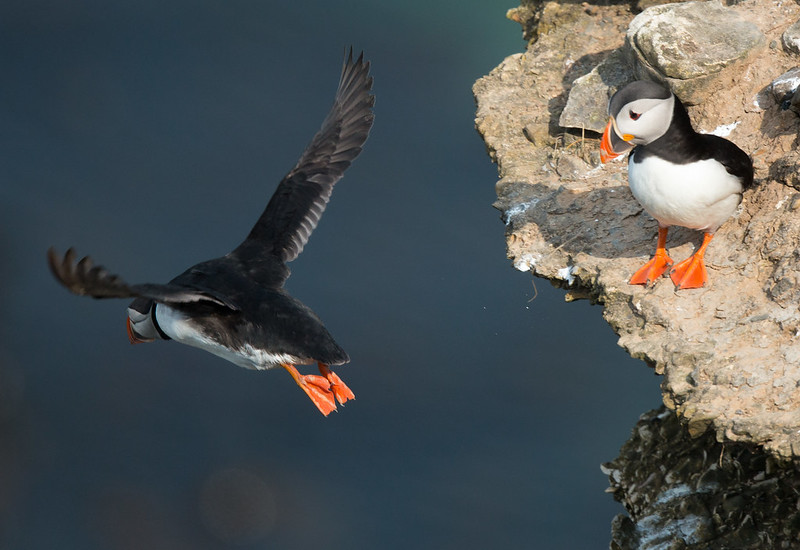From moorland birds to minke whales, there’s a wealth of wildlife waiting to be discovered on the North York Moors. Here's a selection of spots that are easy to get to and where you've got a pretty good chance of seeing something.
We do advise that you contact individual venues to double check suitability for your individual needs or if you have any queries or concerns.
We’ve got plenty more ideas for you, including seven experiences you won't want to miss, as well as accessible attractions, getting active outside or accessible museums and galleries.
Nature experiences with Yorkshire Coast Nature
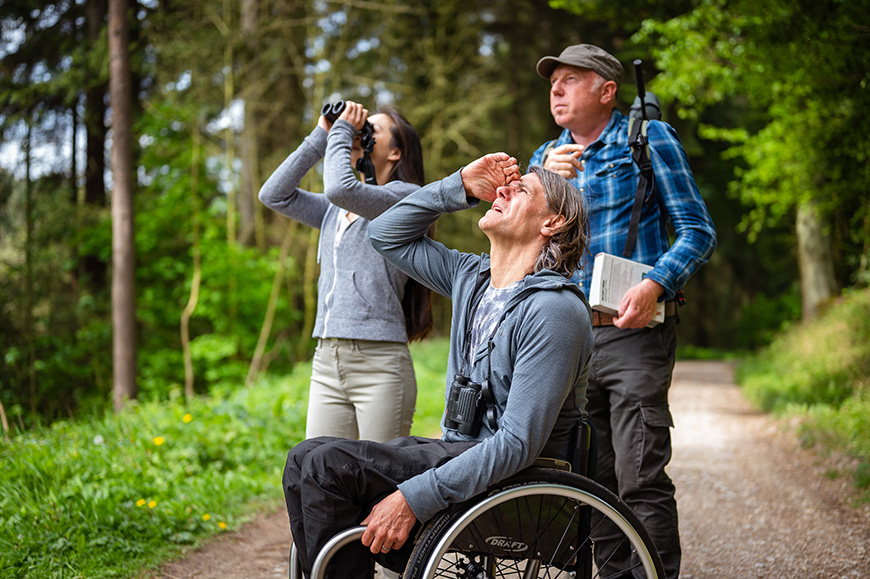
Make lasting memories on an unforgettable wildlife trip with Yorkshire Coast Nature. Whether you like to spot snakes and badgers or honey buzzards and puffins, there will be a nature safari to suit you. These tours, suitable for beginners and avid birdwatchers, will take you through a mosaic of ancient woodland and commercial forest spotting native forest and river birds.
They also run a range of accessible adventures, such as their Bird Sound Safari, celebrating the bird sounds of the forest. This immersive forest walk is with wildlife guide Richard Baines, who shares his passion and knowledge of birds, and is particularly suited for anyone with visual impairments. Learn new deep listening skills and how to identify sounds as varied as the sneeze of a Marsh Tit to the purr of a Turtle Dove.
As Yorkshire Coast Nature use a variety of locations, they can provide you with an accessibility guide for the location for your experience.
Read the Accessibility Guide for Dalby Forest
Farndale Local Nature Reserve
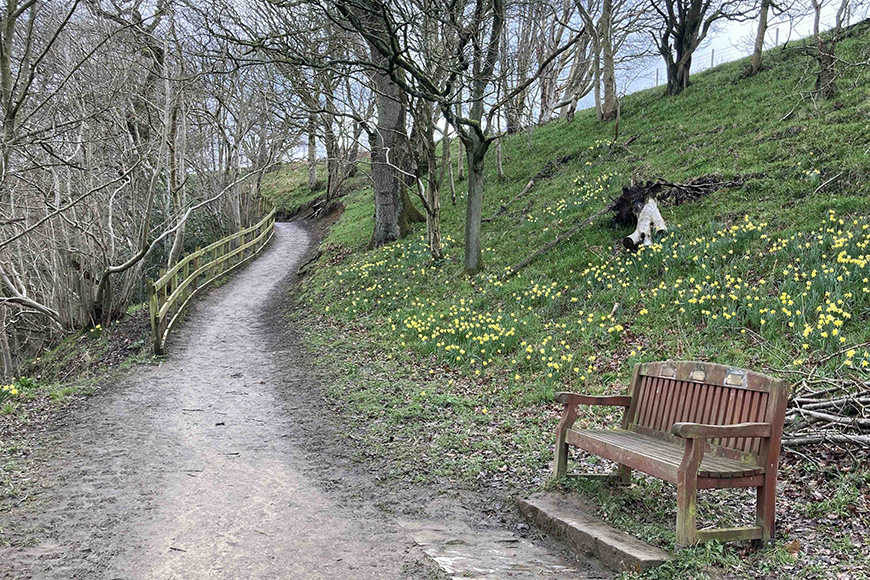 The beautiful valley of Farndale lies at the heart of the North York Moors. Each spring, its glorious daffodils put on one of nature's most spectacular shows – a dazzling display of colour that carpets the meadows and river banks along the River Dove. It's often said that medieval monks from nearby Rievaulx Abbey planted the first daffodil bulbs here. But the petite wild daffodil (Narcissus pseudonarcissus) is one of our native plants and is protected within the Farndale Local Nature Reserve, established in 1955 to safeguard the valley's famous flowers.
The beautiful valley of Farndale lies at the heart of the North York Moors. Each spring, its glorious daffodils put on one of nature's most spectacular shows – a dazzling display of colour that carpets the meadows and river banks along the River Dove. It's often said that medieval monks from nearby Rievaulx Abbey planted the first daffodil bulbs here. But the petite wild daffodil (Narcissus pseudonarcissus) is one of our native plants and is protected within the Farndale Local Nature Reserve, established in 1955 to safeguard the valley's famous flowers.
The Farndale daffodil walk is one of our Miles without Stiles (For some) routes and shows you the very best of the wildflower displays. The walk follows the River Dove from Low Mill to Church Houses and back. There are no stiles or steps, but there are some short sections with gradients that some people will find challenging. The path is surfaced, but still can be muddy in places in wet weather. The daffodils are usually out between mid-March and mid-April, but this is a charming walk at any time of year.
There is a RADAR accessible toilet at Low Mill car park and a mobile information point during daffodil season.
National Centre for Birds of Prey
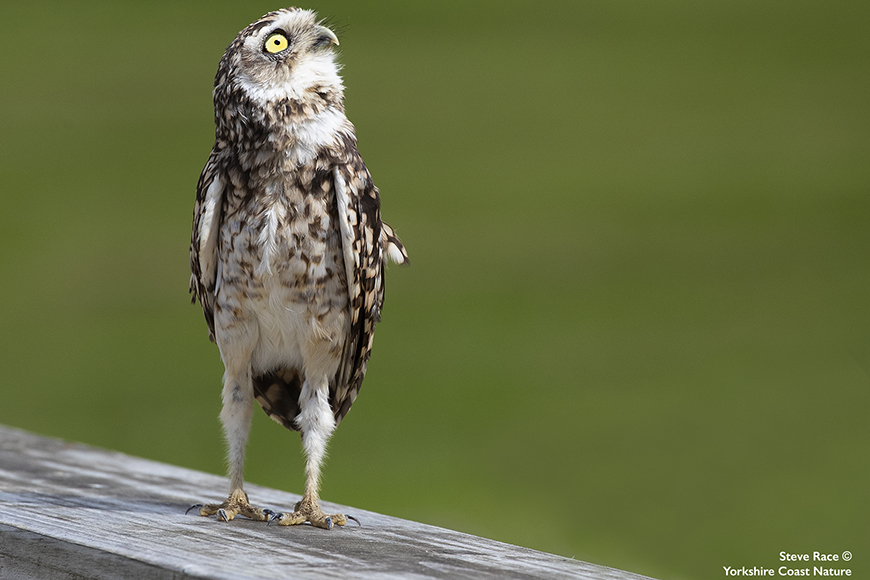
Set in ten acres of woodland and rolling parkland, the National Centre for Birds of Prey has the largest collection of birds of prey in the north of England, housing birds from the tiny Burrowing Owl to the gigantic Steller's Sea Eagle. There are flying demonstrations every day.
The centre is wheelchair friendly, with stone paths, gentle gradients and ramps into and out of the entrance, shop and Owl House Café. Accessible toilets are available. Dogs are not allowed in the centre but shop staff are happy to dog sit well-behaved guide dogs whilst you are inside the centre.
Find out more about their accessibility
Scaling Dam Nature Reserve
From oystercatcher, mallard and teal to goldeneye, widgeon and grebe, you’ll be sure to see these and more from the bird hide at Scaling Dam Nature Reserve, which offers a good vantage point for bird watching all year round. Over 180 species of bird have been recorded at Scaling Dam. The reservoir is important for wintering wildfowl, which you'll find from September - October onwards, including coot, pochard and mallard amongst others. In spring and autumn you may see shoveler, gadwall, goosander while osprey are often seen on their migratory journeys
The bird hide is accessed from Scaling Dam Sailing Club car park. It is a linear route of 270m (there and back). The path has a hard, compacted surface and is fairly level. There are toilets facilities at the western end of the reservoir. The nearest RADAR toilets are at Danby Lodge National Park Centre (7.25km away).
SEA LIFE Scarborough
Journey beneath the waves and get up close and personal with some of the most amazing creatures of the sea including sharks, rays and sea turtles plus a seal hospital at SEA LIFE Scarborough. With regular talks and feeding demonstrations throughout the day, there's plenty to keep everybody occupied.
There is full access throughout with some manoeuvring to avoid stairs; an alternative wheelchair accessible route is signposted. There is a lift to the restaurant and viewing gallery, although it may not be suitable for larger motorised scooters. There are accessible toilets. Free admission for essential carers.
Quiet at the Aquarium sessions run on the first Sunday every month, providing a quieter experience for those with Autism and other neurodiverse conditions.
Read the SEA LIFE Scarborough Accessible Guide
Sutton Bank Nature and Star Hub
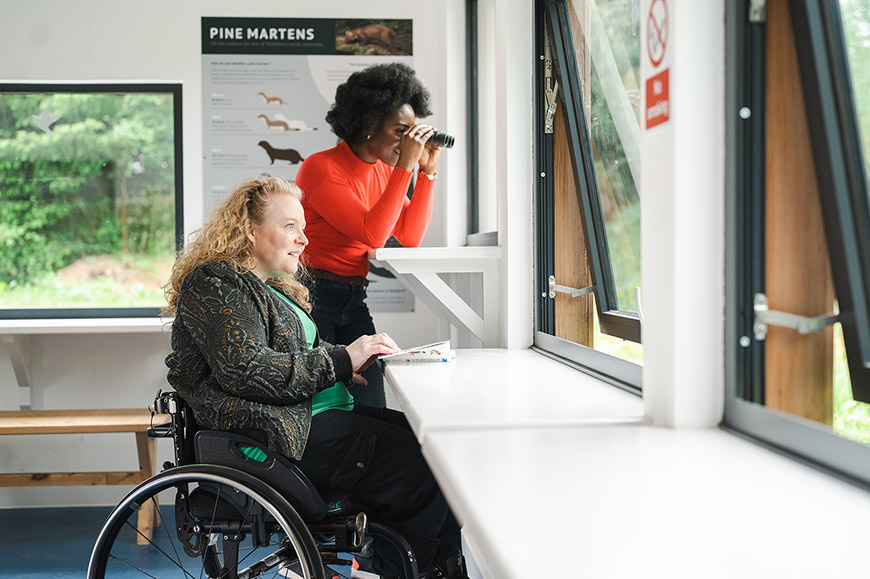
The Nature and Star Hub is situated in a secluded woodland setting, close to Sutton Bank National Park Centre. Stargazing, birdwatching, talks and workshops take place here. There is wheelchair access into this space, which has windows and tables at varying heights suitable for wheelchair users.
There is straightforward access to the main visitor centre (and adjacent café), where you can also birdwatch undercover from the handy wildlife viewing area with a well-stocked bird bistro that attracts all sorts, you may even be lucky enough to see a turtle dove in spring and early summer.
Find out more in the Sutton Bank Accessibility Guide
A little further afield
RSPB Bempton Cliffs Nature Reserve
Bempton Cliffs is home to England's largest population of seabirds. Around half a million seabirds gather here between March and October to raise a family on towering chalk cliffs overlooking the North Sea. You are likely to see puffins, guillemots, razorbills, kittiwakes, herring gulls and the largest gannet colony on the UK mainland.
There are six safe cliff-edge viewing platforms, three of which are fully accessible via a hard surfaced path, giving visitors stunning closeup views of life on the edge. The grassland and scrub along the clifftops are also home to breeding and wintering farmland birds. There is an information centre, tearoom and accessible toilets on site.
Download RSPB Bempton Cliffs' Accessibility Guide
RSPB Saltholme Nature Reserve
North of the National Park is the family-friendly Saltholme Nature Reserve near Middlesbrough. The reserve has a visitor centre, hides and screens which let you get up close to water rail, yellow wagtails and terns, plus a family discovery zone, café and play area.
There are five signposted trails surfaced in bound gravel, mostly on level ground with seating provided. The bird hides are accessible, with some having floor-to-ceiling viewing windows. The Visitor Centre has a lift, with accessible toilets on both floors, café and gift shop. They also have three mobility scooters available for hire for a small donation. Booking is advised.

